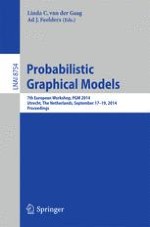2014 | Buch
Probabilistic Graphical Models
7th European Workshop, PGM 2014, Utrecht, The Netherlands, September 17-19, 2014. Proceedings
herausgegeben von: Linda C. van der Gaag, Ad J. Feelders
Verlag: Springer International Publishing
Buchreihe : Lecture Notes in Computer Science
